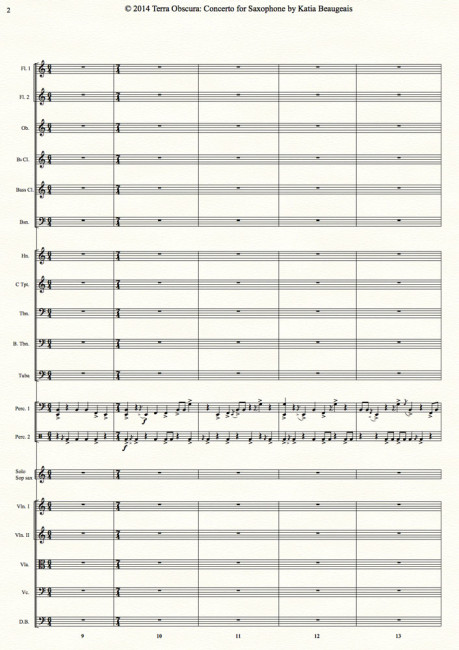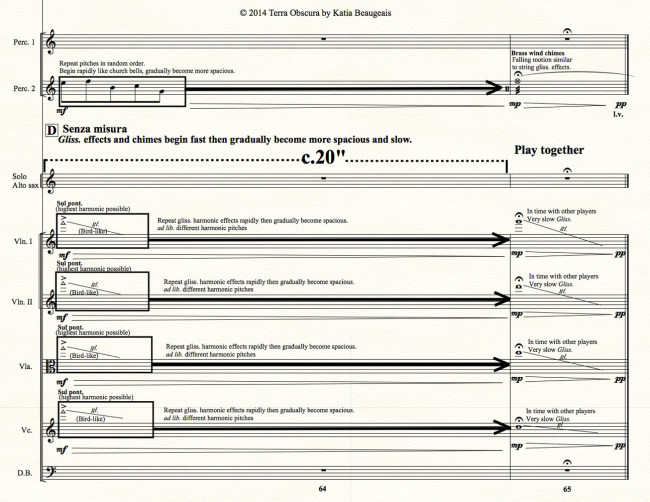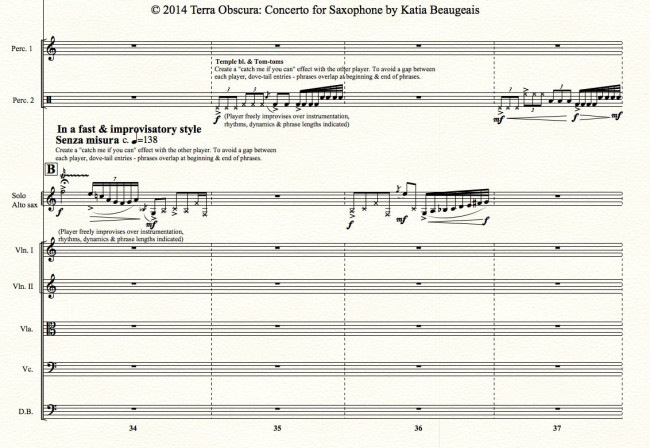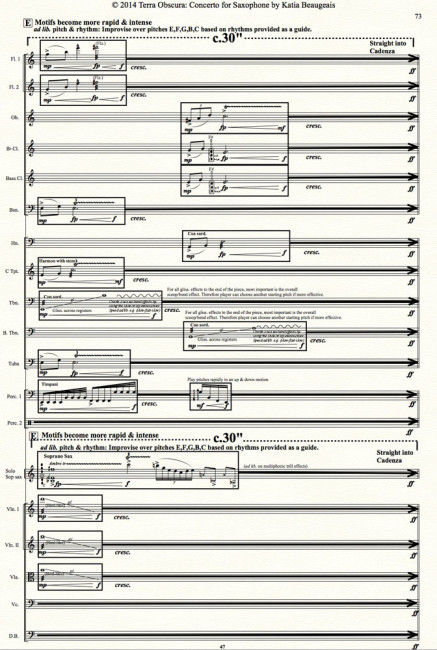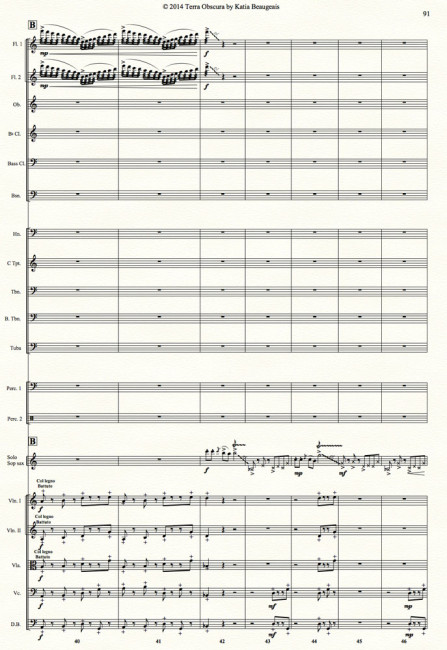Terra Obscura: Concerto for Saxophone for solo saxophone & chamber orchestra
4 movts – 34 min. * Movts can be performed separately.
Watch the world premiere performance with ABC Classic FM broadcast:
Soloist Katia Beaugeais with the Sydney Conservatorium Modern Music Ensemble & conductor Daryl Pratt.
https://www.youtube.com/watch?v=3cP6mLHEcOs
Purchase or download the free score of Terra Obscura at the Australian Music Centre:
http://www.australianmusiccentre.com.au/artist/beaugeais-katia
* Concert performances do not have to include the theatrical walking element to the stage.
This is optional.
Program Note
Terra Obscura: Concerto for Saxophone (2014) by Australian composer Katia Beaugeais, was premiered in 2014 by the Sydney Conservatorium Chamber Orchestra with Beaugeais as soloist, at the Sydney Conservatorium of Music. Terra Obscura was composed for the Conservatorium Centenary Commissioning Project, as part of the prize for winning the 2010 ISCM-IAMIC International Young Composer Award. This saxophone concerto has since been broadcast three times on ABC Classic FM radio.
Terra Obscura: Concerto for Saxophone is inspired by Australia’s colonial history and Australia’s Aboriginal heritage. The excavation and rebuilding of the Sydney Conservatorium of Music in 2001 – which sits on Aboriginal land – uncovered the remnants from Australia’s earliest colonial settlement. Historical artefacts and textural stone features were discovered and showed where the convicts had chipped away. The unconventional position of the players enhances the sense of mystery and intrigue in the first movement. The saxophonist first appears from an upper balcony and the other members of the orchestra are heard softly in the distance, and are completely out of sight. The players begin to emerge from all corners of the hall, and with the soloist gradually walk through the audience, making their way to their place on stage.
The aim of Terra Obscura is to present avant-garde playing techniques, not only in a modernistic style, but also in an atmospheric, expressive, lyrical manner. This is clearly heard in the second movement with the alto saxophone’s soft, pure, vibrato and multiphonic harmonic effects. To imitate the continuous, sustained chords of the vibraphone, the saxophonist circular breathes to avoid taking a normal breath and breaking the sound.
In the third movement, the saxophonist imitates a percussion instrument by playing fast slap-tongue effects on the alto saxophone – a soft drum-like sound created by the tongue suction on the reed. The gradual rebuilding of the Sydney Conservatorium and this building’s Australian colonial significance is depicted by the buildup of players improvising over the main motivic material, creating a massive, loud textural sound mass. In my music I use improvisation as a way of sharing the ‘composer-creator’ role with the players.
The final movement opens with a brass fanfare in a joyous and celebratory style. A fast, energetic, rhythmic feel is established with the soloist playing fast, virtuosic, rippling, semiquaver passages on soprano saxophone. The saxophonist ends the work with loud, high-pitched trill glissando pitch-bend effects alongside the orchestra’s complex, interlocking, pulsating rhythms and glissando rip effects, to create a unifying and commemorative climactic finish.
© 2014 by Katia Beaugeais
CLICK ON MUSIC TO ENLARGE

